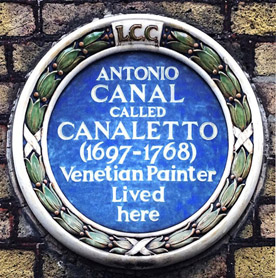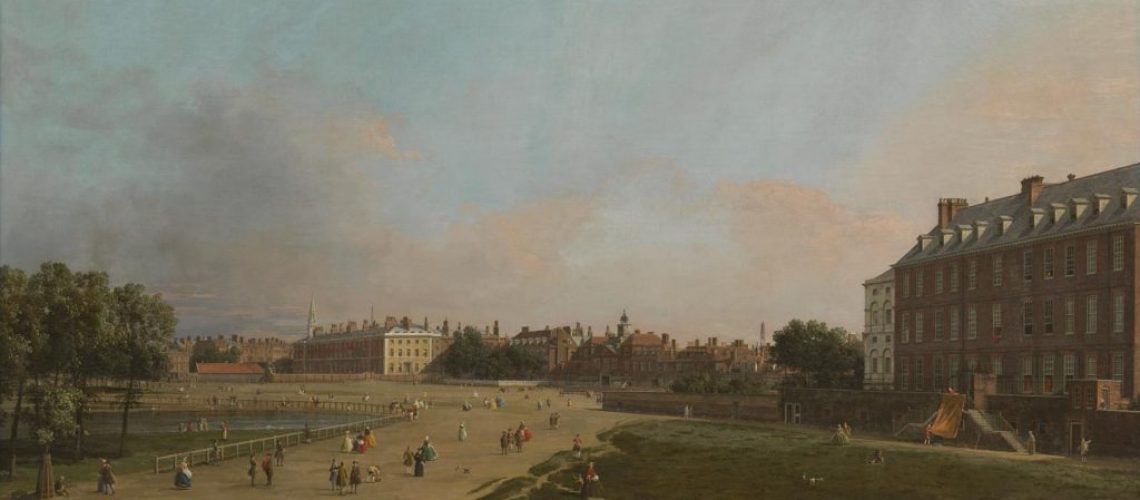An Italian artist better known for his depictions of Venice, Canaletto also painted more than 50 English river and cityscapes during his many years living in London
When Giovanni Antonio Canal, or Canaletto, walked the streets of Westminster, the city became a giant stage set for his paintings. Antonio Canal lodged at 41 Beak Street for 9 years in the 18th century and the artist produced about 50 paintings during his stay.
They portray an idealised London of sparkling clear air and almost cloudless skies – and the painter used artistic licence to enhance the images he created. The buildings are often rotated or enlarged for dramatic effect, or they are embellished or brought closer to one another. Groups of people are also arranged as if on a stage, each providing some drama.
And some experts think that this is the key to his work. Canaletto trained as a theatrical set painter, so creating the ideal image to delight his clients was more important than capturing the reality of scenes.

Canaletto had made his name with views of Venice, providing souvenirs for rich visitors on the Grand Tour. His career peaked in the 1730s, but the outbreak of the War of the Austrian Succession in 1740 restricted travel to Venice for his rich clientele, so, at the age of 49, he headed to London and the house in Soho, in what was then called Silver Street, in the heart of the city’s Venetian community.
Number 41 is typical of the houses built in Soho in the 1680s, although it has been altered in succeeding centuries. English Heritage says that the high-glaze plaque honouring Canaletto, with its distinctive coloured wreath, is one of the series made by Royal Doulton and dates from 1925.
And Canaletto would probably feel at home there today – there is currently a Venetian restaurant on the ground floor.
Explore Canaletto’s work at the:
Photo: Painting of The Old Horse Guards from St James’s Park, c1749, by Canaletto (1697-1768) (lent to the Tate by The Andrew Lloyd Webber Foundation)

